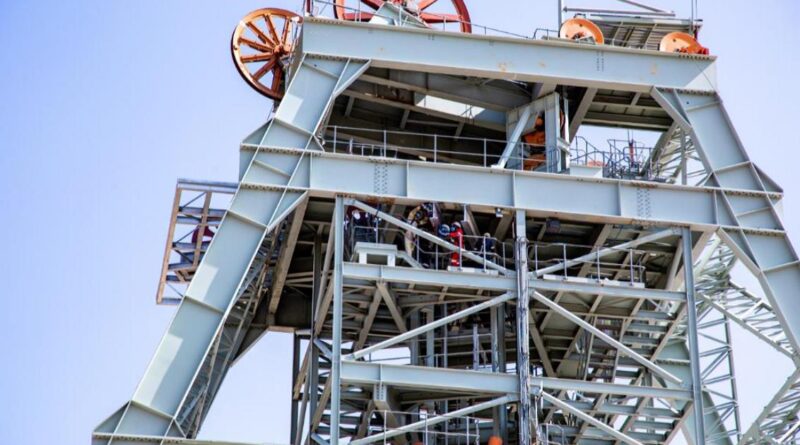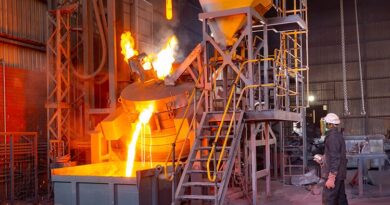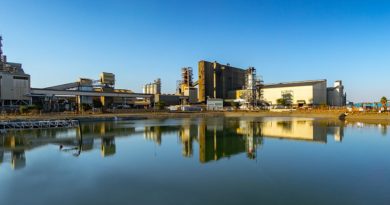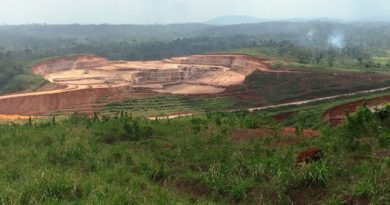Platreef to become one of world’s largest and lowest-cost PGM producers
Platreef’s Phase 2, 5.2-million-tonnes-per-annum steady state production rate would rank it as the world’s fifth largest primary platinum-group metals mine on a palladium equivalent basis, with annual forecast production of more than 590,000 ounces of palladium, platinum, rhodium and gold, plus more than 40 million pounds of nickel and copper.
The Platreef 2022 Feasibility Study reflects the initial two phases of development for the Platreef Mine. Previous studies have demonstrated the resource base for future expansions up to 12 million tonnes per annum.
Through phased development, Platreef is projected to become one of the world’s largest and lowest-cost producers of palladium, rhodium, nickel, platinum, copper and gold. The 2022 Feasibility Study considers Phase 1 and Phase 2 development, including only one third of Platreef’s Indicated Resources above an US$80/tonne Net Smelter Return (NSR) cut-off.
As development and stoping of the project progresses, additional drilling from underground will be undertaken with the goal of increasing the confidence of the current mineral resources, as well as to expand the resource base.
Platreef’s thick mineralization, which will be mined with highly productive mechanized methods, combined with higher nickel and copper grades, contribute to lower cash costs compared to other primary platinum-group-metal producers.Among global primary platinum-group-metals producers, Platreef’s estimated net total cash cost of US$514 per 3PE+Au ounce, net of copper and nickel by-product credits and including sustaining capital costs, ranks at the bottom of the cash-cost curve.
Platreef’s Indicated Mineral Resources contain an estimated 18.9 million ounces of palladium, 18.7 million ounces of platinum, 3.1 million ounces of gold, and 1.2 million ounces of rhodium (a combined 41.9 million ounces PGMs plus gold), plus 2.4 billion pounds of nickel and 1.2 billion pounds of copper, at a 2.0 g/t 3PE+Au cut-off.
Platreef’s Inferred Mineral Resources contain an additional 23.8 million ounces of palladium, 23.2 million ounces of platinum, 4.3 million ounces of gold, and 1.6 million ounces of rhodium (a combined 52.8 million ounces PGMs plus gold), plus 3.4 billion pounds of nickel and 1.78 billion pounds of copper, also at a 2.0 g/t 3PE+Au cut-off.
Shaft 2 commissioning accelerated to 2027, expediting Phase 2 expansion
While the 700-ktpa initial mine is operating using Shaft 1, the sinking of the project’s second, larger shaft (Shaft 2), that drives the Phase 2 expansion to 5.2 million tonnes per annum, will progress simultaneously. The 2022 Feasibility Study envisions Shaft 2 equipped for hoisting in 2027, an accelerated schedule by approximately 18 months compared to the 2020 PEA, and coming online approximately three years from first production of Phase 1.
Once Shaft 2 is complete, two 2.2-million-tonnes-per-annum concentrator modules will be commissioned, and the initial concentrator will be ramped up to its full capacity of 770-ktpa, increasing the steady-state production to 5.2 million tonnes per annum.
About Ivanhoe Mines
Ivanhoe Mines is a leading Canadian mining company developing and expanding its four principal mining and exploration projects in Southern Africa: the Kamoa-Kakula copper mining complex in the Democratic Republic of Congo (DRC) that began commercial operations in July 2021; the Platreef palladium, rhodium, nickel, platinum, copper and gold discovery in South Africa; the historic Kipushi zinc-copper-lead-germanium mine in the DRC; and the expansive exploration program for new copper discoveries on Ivanhoe’s Western Foreland exploration licences, near Kamoa-Kakula. Kamoa-Kakula is the world’s fastest growing major copper mine. Kamoa-Kakula began producing copper concentrates in May 2021 and, through phased expansions, is positioned to become one of the world’s largest copper producers. Kamoa-Kakula is being powered by clean, renewable hydro-generated electricity and is projected to be among the world’s lowest greenhouse gas emitters per unit of metal produced.




